#IoT data visualization tools
Text

IoT Network Protocols (e.g., MQTT, CoAP)
Harness robust IoT network protocols, including MQTT and CoAP, for seamless connectivity!
#IoT software development services#embedded software development services#IoT device selection#IoT strategy consultation#IoT data visualization tools#edge computing for IoT#IoT network protocols (e.g.#MQTT#CoAP)#IoT user experience design#AI in IoT solutions#IoT and blockchain integration#IoT app design services#IoT app development#IoT device integration#IoT data analytics services#IoT security solutions#custom IoT application development#enterprise IoT services#industrial IoT solutions#IoT firmware development#IoT cloud integration#IoT connectivity solutions#mobile app development#software development#TechAhead Corp#TechAheadCorp#techaheadcorp.com
0 notes
Text
In the subject of data analytics, this is the most important concept that everyone needs to understand. The capacity to draw insightful conclusions from data is a highly sought-after talent in today's data-driven environment. In this process, data analytics is essential because it gives businesses the competitive edge by enabling them to find hidden patterns, make informed decisions, and acquire insight. This thorough guide will take you step-by-step through the fundamentals of data analytics, whether you're a business professional trying to improve your decision-making or a data enthusiast eager to explore the world of analytics.
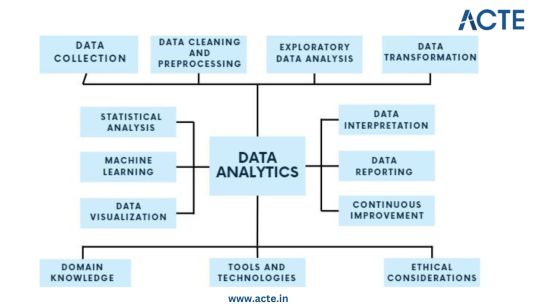
Step 1: Data Collection - Building the Foundation
Identify Data Sources: Begin by pinpointing the relevant sources of data, which could include databases, surveys, web scraping, or IoT devices, aligning them with your analysis objectives.
Define Clear Objectives: Clearly articulate the goals and objectives of your analysis to ensure that the collected data serves a specific purpose.
Include Structured and Unstructured Data: Collect both structured data, such as databases and spreadsheets, and unstructured data like text documents or images to gain a comprehensive view.
Establish Data Collection Protocols: Develop protocols and procedures for data collection to maintain consistency and reliability.
Ensure Data Quality and Integrity: Implement measures to ensure the quality and integrity of your data throughout the collection process.
Step 2: Data Cleaning and Preprocessing - Purifying the Raw Material
Handle Missing Values: Address missing data through techniques like imputation to ensure your dataset is complete.
Remove Duplicates: Identify and eliminate duplicate entries to maintain data accuracy.
Address Outliers: Detect and manage outliers using statistical methods to prevent them from skewing your analysis.
Standardize and Normalize Data: Bring data to a common scale, making it easier to compare and analyze.
Ensure Data Integrity: Ensure that data remains accurate and consistent during the cleaning and preprocessing phase.
Step 3: Exploratory Data Analysis (EDA) - Understanding the Data
Visualize Data with Histograms, Scatter Plots, etc.: Use visualization tools like histograms, scatter plots, and box plots to gain insights into data distributions and patterns.
Calculate Summary Statistics: Compute summary statistics such as means, medians, and standard deviations to understand central tendencies.
Identify Patterns and Trends: Uncover underlying patterns, trends, or anomalies that can inform subsequent analysis.
Explore Relationships Between Variables: Investigate correlations and dependencies between variables to inform hypothesis testing.
Guide Subsequent Analysis Steps: The insights gained from EDA serve as a foundation for guiding the remainder of your analytical journey.
Step 4: Data Transformation - Shaping the Data for Analysis
Aggregate Data (e.g., Averages, Sums): Aggregate data points to create higher-level summaries, such as calculating averages or sums.
Create New Features: Generate new features or variables that provide additional context or insights.
Encode Categorical Variables: Convert categorical variables into numerical representations to make them compatible with analytical techniques.
Maintain Data Relevance: Ensure that data transformations align with your analysis objectives and domain knowledge.
Step 5: Statistical Analysis - Quantifying Relationships
Hypothesis Testing: Conduct hypothesis tests to determine the significance of relationships or differences within the data.
Correlation Analysis: Measure correlations between variables to identify how they are related.
Regression Analysis: Apply regression techniques to model and predict relationships between variables.
Descriptive Statistics: Employ descriptive statistics to summarize data and provide context for your analysis.
Inferential Statistics: Make inferences about populations based on sample data to draw meaningful conclusions.
Step 6: Machine Learning - Predictive Analytics
Algorithm Selection: Choose suitable machine learning algorithms based on your analysis goals and data characteristics.
Model Training: Train machine learning models using historical data to learn patterns.
Validation and Testing: Evaluate model performance using validation and testing datasets to ensure reliability.
Prediction and Classification: Apply trained models to make predictions or classify new data.
Model Interpretation: Understand and interpret machine learning model outputs to extract insights.
Step 7: Data Visualization - Communicating Insights
Chart and Graph Creation: Create various types of charts, graphs, and visualizations to represent data effectively.
Dashboard Development: Build interactive dashboards to provide stakeholders with dynamic views of insights.
Visual Storytelling: Use data visualization to tell a compelling and coherent story that communicates findings clearly.
Audience Consideration: Tailor visualizations to suit the needs of both technical and non-technical stakeholders.
Enhance Decision-Making: Visualization aids decision-makers in understanding complex data and making informed choices.
Step 8: Data Interpretation - Drawing Conclusions and Recommendations
Recommendations: Provide actionable recommendations based on your conclusions and their implications.
Stakeholder Communication: Communicate analysis results effectively to decision-makers and stakeholders.
Domain Expertise: Apply domain knowledge to ensure that conclusions align with the context of the problem.
Step 9: Continuous Improvement - The Iterative Process
Monitoring Outcomes: Continuously monitor the real-world outcomes of your decisions and predictions.
Model Refinement: Adapt and refine models based on new data and changing circumstances.
Iterative Analysis: Embrace an iterative approach to data analysis to maintain relevance and effectiveness.
Feedback Loop: Incorporate feedback from stakeholders and users to improve analytical processes and models.
Step 10: Ethical Considerations - Data Integrity and Responsibility
Data Privacy: Ensure that data handling respects individuals' privacy rights and complies with data protection regulations.
Bias Detection and Mitigation: Identify and mitigate bias in data and algorithms to ensure fairness.
Fairness: Strive for fairness and equitable outcomes in decision-making processes influenced by data.
Ethical Guidelines: Adhere to ethical and legal guidelines in all aspects of data analytics to maintain trust and credibility.
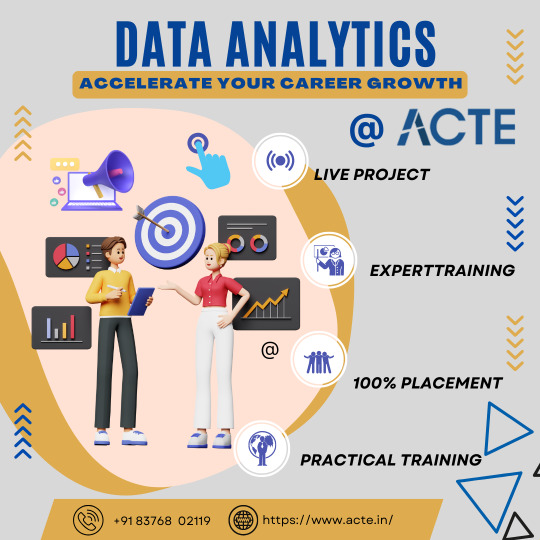
Data analytics is an exciting and profitable field that enables people and companies to use data to make wise decisions. You'll be prepared to start your data analytics journey by understanding the fundamentals described in this guide. To become a skilled data analyst, keep in mind that practice and ongoing learning are essential. If you need help implementing data analytics in your organization or if you want to learn more, you should consult professionals or sign up for specialized courses. The ACTE Institute offers comprehensive data analytics training courses that can provide you the knowledge and skills necessary to excel in this field, along with job placement and certification. So put on your work boots, investigate the resources, and begin transforming.
21 notes
·
View notes
Text
What Future Trends in Software Engineering Can Be Shaped by C++
The direction of innovation and advancement in the broad field of software engineering is greatly impacted by programming languages. C++ is a well-known programming language that is very efficient, versatile, and has excellent performance. In terms of the future, C++ will have a significant influence on software engineering, setting trends and encouraging innovation in a variety of fields.
In this blog, we'll look at three key areas where the shift to a dynamic future could be led by C++ developers.
1. High-Performance Computing (HPC) & Parallel Processing
Driving Scalability with Multithreading
Within high-performance computing (HPC), where managing large datasets and executing intricate algorithms in real time are critical tasks, C++ is still an essential tool. The fact that C++ supports multithreading and parallelism is becoming more and more important as parallel processing-oriented designs, like multicore CPUs and GPUs, become more commonplace.
Multithreading with C++
At the core of C++ lies robust support for multithreading, empowering developers to harness the full potential of modern hardware architectures. C++ developers adept in crafting multithreaded applications can architect scalable systems capable of efficiently tackling computationally intensive tasks.

C++ Empowering HPC Solutions
Developers may redefine efficiency and performance benchmarks in a variety of disciplines, from AI inference to financial modeling, by forging HPC solutions with C++ as their toolkit. Through the exploitation of C++'s low-level control and optimization tools, engineers are able to optimize hardware consumption and algorithmic efficiency while pushing the limits of processing capacity.
2. Embedded Systems & IoT
Real-Time Responsiveness Enabled
An ability to evaluate data and perform operations with low latency is required due to the widespread use of embedded systems, particularly in the quickly developing Internet of Things (IoT). With its special combination of system-level control, portability, and performance, C++ becomes the language of choice.
C++ for Embedded Development
C++ is well known for its near-to-hardware capabilities and effective memory management, which enable developers to create firmware and software that meet the demanding requirements of environments with limited resources and real-time responsiveness. C++ guarantees efficiency and dependability at all levels, whether powering autonomous cars or smart devices.
Securing IoT with C++
In the intricate web of IoT ecosystems, security is paramount. C++ emerges as a robust option, boasting strong type checking and emphasis on memory protection. By leveraging C++'s features, developers can fortify IoT devices against potential vulnerabilities, ensuring the integrity and safety of connected systems.
3. Gaming & VR Development
Pushing Immersive Experience Boundaries
In the dynamic domains of game development and virtual reality (VR), where performance and realism reign supreme, C++ remains the cornerstone. With its unparalleled speed and efficiency, C++ empowers developers to craft immersive worlds and captivating experiences that redefine the boundaries of reality.
Redefining VR Realities with C++
When it comes to virtual reality, where user immersion is crucial, C++ is essential for producing smooth experiences that take users to other worlds. The effectiveness of C++ is crucial for preserving high frame rates and preventing motion sickness, guaranteeing users a fluid and engaging VR experience across a range of applications.

C++ in Gaming Engines
C++ is used by top game engines like Unreal Engine and Unity because of its speed and versatility, which lets programmers build visually amazing graphics and seamless gameplay. Game developers can achieve previously unattainable levels of inventiveness and produce gaming experiences that are unmatched by utilizing C++'s capabilities.
Conclusion
In conclusion, there is no denying C++'s ongoing significance as we go forward in the field of software engineering. C++ is the trend-setter and innovator in a variety of fields, including embedded devices, game development, and high-performance computing. C++ engineers emerge as the vanguards of technological growth, creating a world where possibilities are endless and invention has no boundaries because of its unmatched combination of performance, versatility, and control.
FAQs about Future Trends in Software Engineering Shaped by C++
How does C++ contribute to future trends in software engineering?
C++ remains foundational in software development, influencing trends like high-performance computing, game development, and system programming due to its efficiency and versatility.
Is C++ still relevant in modern software engineering practices?
Absolutely! C++ continues to be a cornerstone language, powering critical systems, frameworks, and applications across various industries, ensuring robustness and performance.
What advancements can we expect in C++ to shape future software engineering trends?
Future C++ developments may focus on enhancing parallel computing capabilities, improving interoperability with other languages, and optimizing for emerging hardware architectures, paving the way for cutting-edge software innovations.
9 notes
·
View notes
Text
Exploring Python: Features and Where It's Used
Python is a versatile programming language that has gained significant popularity in recent times. It's known for its ease of use, readability, and adaptability, making it an excellent choice for both newcomers and experienced programmers. In this article, we'll delve into the specifics of what Python is and explore its various applications.
What is Python?
Python is an interpreted programming language that is high-level and serves multiple purposes. Created by Guido van Rossum and released in 1991, Python is designed to prioritize code readability and simplicity, with a clean and minimalistic syntax. It places emphasis on using proper indentation and whitespace, making it more convenient for programmers to write and comprehend code.
Key Traits of Python :
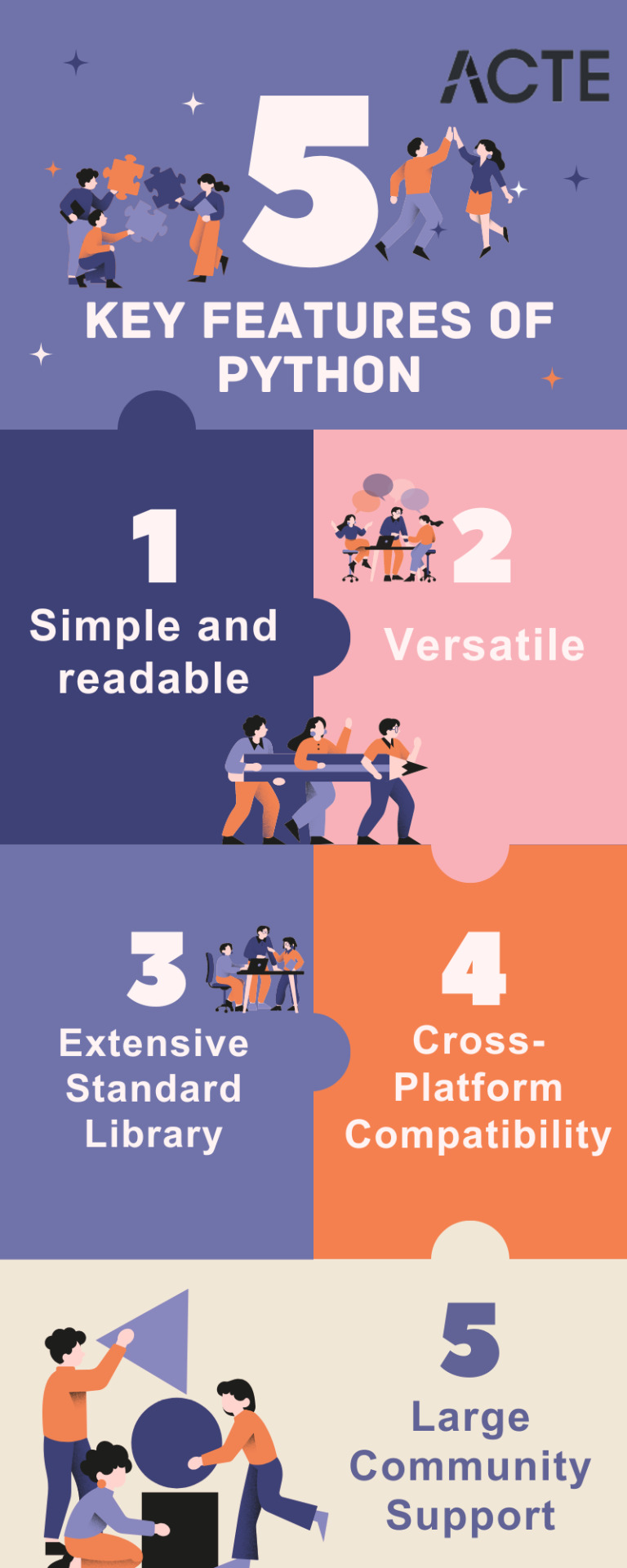
Simplicity and Readability: Python code is structured in a way that's easy to read and understand. This reduces the time and effort required for both creating and maintaining software.
Python code example: print("Hello, World!")
Versatility: Python is applicable across various domains, from web development and scientific computing to data analysis, artificial intelligence, and more.
Python code example: import numpy as np
Extensive Standard Library: Python offers an extensive collection of pre-built libraries and modules. These resources provide developers with ready-made tools and functions to tackle complex tasks efficiently.
Python code example: import matplotlib.pyplot as plt
Compatibility Across Platforms: Python is available on multiple operating systems, including Windows, macOS, and Linux. This allows programmers to create and run code seamlessly across different platforms.
Strong Community Support: Python boasts an active community of developers who contribute to its growth and provide support through online forums, documentation, and open-source contributions. This community support makes Python an excellent choice for developers seeking assistance or collaboration.
Where is Python Utilized?
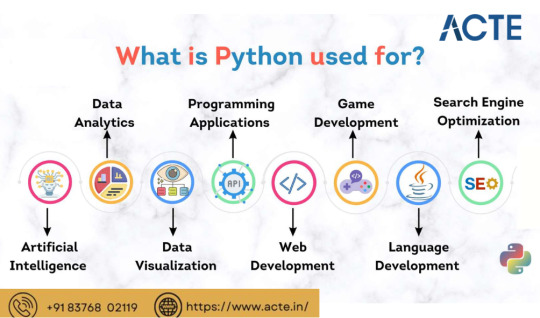
Due to its versatility, Python is utilized in various domains and industries. Some key areas where Python is widely applied include:
Web Development: Python is highly suitable for web development tasks. It offers powerful frameworks like Django and Flask, simplifying the process of building robust web applications. The simplicity and readability of Python code enable developers to create clean and maintainable web applications efficiently.
Data Science and Machine Learning: Python has become the go-to language for data scientists and machine learning practitioners. Its extensive libraries such as NumPy, Pandas, and SciPy, along with specialized libraries like TensorFlow and PyTorch, facilitate a seamless workflow for data analysis, modeling, and implementing machine learning algorithms.
Scientific Computing: Python is extensively used in scientific computing and research due to its rich scientific libraries and tools. Libraries like SciPy, Matplotlib, and NumPy enable efficient handling of scientific data, visualization, and numerical computations, making Python indispensable for scientists and researchers.
Automation and Scripting: Python's simplicity and versatility make it a preferred language for automating repetitive tasks and writing scripts. Its comprehensive standard library empowers developers to automate various processes within the operating system, network operations, and file manipulation, making it popular among system administrators and DevOps professionals.
Game Development: Python's ease of use and availability of libraries like Pygame make it an excellent choice for game development. Developers can create interactive and engaging games efficiently, and the language's simplicity allows for quick prototyping and development cycles.
Internet of Things (IoT): Python's lightweight nature and compatibility with microcontrollers make it suitable for developing applications for the Internet of Things. Libraries like Circuit Python enable developers to work with sensors, create interactive hardware projects, and connect devices to the internet.
Python's versatility and simplicity have made it one of the most widely used programming languages across diverse domains. Its clean syntax, extensive libraries, and cross-platform compatibility make it a powerful tool for developers. Whether for web development, data science, automation, or game development, Python proves to be an excellent choice for programmers seeking efficiency and user-friendliness. If you're considering learning a programming language or expanding your skills, Python is undoubtedly worth exploring.
8 notes
·
View notes
Text
Exploring the Future: Emerging Technologies Shaping Our World
The world of technology is in a constant state of evolution, and it's an exciting journey into the future. As we navigate the 21st century, we find ourselves surrounded by emerging technologies that promise to reshape our lives in profound ways. From artificial intelligence (AI) to virtual reality (VR) and beyond, the future is brimming with innovations that hold the potential to transform industries, improve our daily routines, and challenge our perceptions of what's possible. In this blog post, we'll take a closer look at some of these groundbreaking technologies and the impact they may have on our future.
Artificial Intelligence (AI): The Power of Machine Learning
AI, often described as the pinnacle of human achievement in technology, is already making waves across various industries. Machine learning algorithms are becoming increasingly sophisticated, enabling AI systems to analyze vast datasets, make predictions, and perform tasks that were once reserved for human experts. As AI continues to advance, we can expect to see its applications in healthcare, finance, autonomous vehicles, and even creative fields like art and music composition. AI-driven personal assistants and chatbots will become more intelligent and seamlessly integrated into our daily lives, making our interactions with technology more intuitive and efficient.
Virtual Reality (VR) and Augmented Reality (AR): Immersive Experiences
Virtual reality and augmented reality are revolutionizing the way we experience entertainment, education, and even work. VR immerses users in virtual worlds, while AR overlays digital information onto the physical world. These technologies are poised to redefine the way we learn, play, and connect with others. In education, students can explore historical events or distant planets through immersive VR experiences. In healthcare, surgeons can use AR to visualize patient data during surgery. The gaming industry continues to push the boundaries of VR, providing gamers with unparalleled levels of immersion. As hardware becomes more accessible and affordable, VR and AR will undoubtedly become integral parts of our lives.
5G Connectivity: The Backbone of the Internet of Things (IoT)
The rollout of 5G networks is another milestone in our technological journey. With speeds that dwarf those of 4G, 5G will unlock the full potential of the Internet of Things (IoT). Smart cities will become a reality, with connected devices and sensors optimizing everything from traffic flow to energy consumption. Telemedicine will thrive with low-latency connections, enabling remote consultations and surgeries. The way we work will transform, with remote collaboration tools benefiting from seamless, high-speed connectivity.
Sustainable Technology: A Greener Future
As we grapple with the challenges of climate change, technology is stepping up to provide solutions. Renewable energy sources like solar and wind power are becoming more efficient and affordable. Electric vehicles (EVs) are rapidly gaining popularity, and self-driving EVs promise to revolutionize transportation. Innovations in sustainable agriculture, such as vertical farming and precision agriculture, are increasing food production while minimizing environmental impact. These advancements in green technology are crucial steps toward a more sustainable and environmentally friendly future.
Conclusion
The future of technology is bright, filled with promise, and limited only by our imagination. As these emerging technologies become more integrated into our lives, they will undoubtedly bring about profound changes in the way we work, learn, communicate, and interact with the world around us. Embracing these innovations and staying informed about the latest developments will empower us to thrive in the dynamic landscape of the future. So, fasten your seatbelts, because the journey into the future of tech promises to be an exhilarating one, and we're just getting started.
#auto tech#future_tech#technology#tech news#security#tech house#software#retro tech#tips#witch tips#tech
2 notes
·
View notes
Text
The iPaaS Empowerment and Some Essential Capabilities Fueling Success!
iPaaS (Integration Platform as a Service) has proved as a game-changer for businesses to grow & rule the current market with integration, accelerated workflows & enhanced data management solutions. It’s a cloud-based solution that helps in integrating software applications & streamlines operations. A professional iPaaS company can help you with enterprise-level solutions and offers a comprehensive approach that drives success for your organization. Many businesses, irrespective of their size & specification, are going to hire an iPaaS provider because it results more economical & beneficial for their businesses. But, before shifting it to a 3rd party service provider, there are certain factors that you must consider. In this blog, we have compressed some of the most crucial parameters that you must look into while connecting with an iPaaS provider.
Different considerable aspects while going for the iPaaS revolution
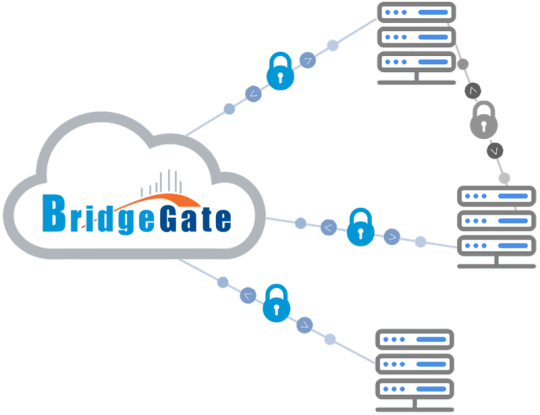
Optimized connectivity-
One of the prime qualities of an iPaaS company is to provide uninterrupted connectivity & effortless integration in the system. An iPaaS platform can create comprehensive compatibility & agility that not only connects the applications but also effortlessly integrates with legacy systems, cloud-based apps, APIs & IoT devices. This approach helps businesses a lot in unifying data from different sources, receiving proper data insights, taking data-driven decisions, and streamlining their operations.
Workflow automation-
iPaaS platform can help a business by creating complex workflows with ease through unparalleled workflow automation. It removes the need for human intervention and leads to fewer error occurrences, which are mainly human errors. It makes the process more fluent with a user-friendly interface & visually engaging appearances. Also, there are advanced triggers like real-time notification & supervision that result in optimizing the operations and eventually generating better results for the products & services.
AI-Powered insights-
In the age of data integration & data management solutions, AI has come up with a crucial role that helps in extracting valuable insights from the vast region of information. With advanced analytical tools & technologies, it helps in transforming raw data into actionable insights. This helps an organization identify opportunities & take data-driven decisions. Prescriptive analytics helps in creating customizable recommendations. Leveraging AI, iPaaS empowers companies to track performance, identify & monitor KPIs, and drive continuous improvement across all business functions.
Scalability-
The uninterrupted growth of a business highly relies on scalability & performance efficiency. An iPaaS platform provides advanced data management services by leveraging cloud-native architecture & trending data handling techniques. In this ever-increasing demand of the current business market, scaling capacities & performance assurance ensure the high-end success of a business. The iPaaS platform offers a quick response time & smooth data flow across the system by focusing on strategic implementations & breaking technological boundings effectively.
Data transformation & governance- iPaaS companies can help your business with effective data transformation & governance. To meet the standard regulatory aspects, functions like data encryption, strict data security & data governance are performed. iPaaS platform ensures that the right information is delivered in the right direction at the right time. From data mapping & transformation capabilities to data manipulation & governance, this platform can make it more seamless, holds customers' trust, and enables them to embrace the benefits of data-driven decisions.
Wrapping up
The above-mentioned parameters establish the credibility & expertise of a professional iPaaS company that can help businesses to optimize their digital transformation journey. Vorro’s BridgeGate Integration is an iPaaS that offers a collaborative solution approach to businesses across different industries and helps them to advance their ecosystem with trending technical interventions. As a responsible service provider, we use technology to provide scalable integration solutions by ensuring high-end security measures. If you are someone who is passionate about unlocking the enterprise's success of your business, embrace the power of iPaaS without compromising! We encourage you to welcome this digital revolution today to position your business at the forefront of the market tomorrow!
2 notes
·
View notes
Text
data outsourcing companies in india
Data management is the practice of ingesting, processing, securing and storing an organization’s data, where it is then utilized for strategic decision-making to improve business outcomes. Over the last decade, developments within hybrid cloud, artificial intelligence, the Internet of Things (IoT), and edge computing have led to the exponential growth of big data, creating even more complexity for enterprises to manage. As a result, a data management discipline within an organization has become an increasing priority as this growth has created significant challenges, such as data silos, security risks, and general bottlenecks to decision-making. Teams address these challenges head on with a number of data management solutions, which are aimed to clean, unify, and secure data. This, in turn, allows leaders to glean insights through dashboards and other data visualization tools, enabling informed business decisions. It also empowers data science teams to investigate more complex questions, allowing them to leverage more advanced analytical capabilities, like machine learning, for proof-of-concept projects. If they’re successful at delivering and improving against business outcomes, they can partner with relevant teams to scale those learnings across their organization through automation practices.
#data entry companies#data management#data entry#monday motivation#happy monday#data analysis#banglore#canada#data enrichment#data entry services#karnataka#data outsourcing
2 notes
·
View notes
Text
All About Business Analytics And How The Tools Are Used
Let's start by defining the differences between traditional analytics and data analytics. Although there is a difference, the terms are frequently used interchangeably. Traditional data analytics is the process of delving into vast amounts of gathered data in order to derive conclusions and forecasts.
Using prebuilt business content and instruments that speed up the analysis process, business data analytics (also known as business analytics) with a PGDM in Business Analytics degree takes that concept and applies it to the context of business insight.
Business analytics with a PGDM in Business Analytics degree specifically refers to:
Collecting and handling old business data.
Examining that information to find trends, patterns, and underlying causes.
Utilizing those insights to inform data-driven business decisions.
In other words, the term "data analytics" refers to the modern analytics process more broadly. As the overall volume of data has increased, business analytics, which implies a more focused approach, has functionally become more common and more significant for organizations all over the world.
Organizations can combine data from various departments, including sales, marketing, HR, and finance, using cloud analytics professionals with a Postgraduate Diploma degree and knowledge of tools to create a unified view that illustrates how the performance of one department can affect that of the others. In addition, tools like visualization, predictive analytics, and scenario modeling provide a wide range of original insights throughout the entire organization.
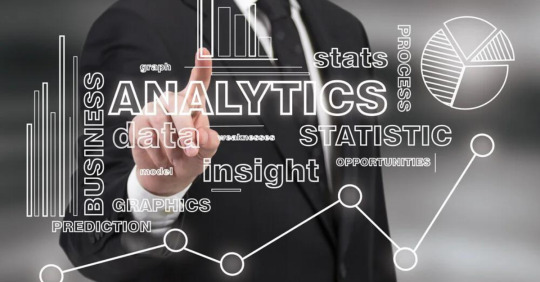
Using tools for business analytics taught in the PGDBA course
The many separate elements of Post graduate in Business Analytics come together to produce insights. The process actually begins with the infrastructure for bringing that data in, even though business analytics tools handle the aspects of crunching data and generating insights through reports and visualization. The following is a typical business analytics process workflow taught in PGDM in Business Analytics:
Data collection: All data must be gathered and centralized for access, regardless of where it originates, including from IoT devices, apps, spreadsheets, and social media. The collection procedure is made noticeably simpler by using a cloud database.
Data Mining: Data must first be sorted and processed before being stored (typically in a data lake) and used in data mining. Data scientists can concentrate more on developing insights rather than manual logistical tasks by using machine learning algorithms to accelerate this process by identifying patterns and repeatable actions, such as creating metadata for data from specific sources.
Descriptive analytics: What is happening and why is it happening? Descriptive analytics These queries are addressed by descriptive data analytics to develop a deeper comprehension of the data's narrative.
Predictive analytics: With sufficient data and descriptive analytics processing, business analytics tools can begin to create predictive models based on trends and previous data. Thus, decisions in the future involving organizational and business choices can be informed by these models.
2 notes
·
View notes
Text
Vibration Analysis In Kalpakkam

Vibration Analysis In Kalpakkam Vibration analysis is a crucial tool in engineering and industrial applications, providing valuable insights into the condition, performance, and potential issues of machinery and structures. It involves the study of mechanical oscillations and vibrations to understand their characteristics, identify abnormalities, and ensure optimal functioning.
One of the primary applications of vibration analysis is in predictive maintenance. By monitoring the vibrations of rotating machinery such as motors, pumps, and turbines, engineers can detect early signs of potential failures or malfunctions. Unusual vibrations, frequencies, or amplitudes often indicate problems like misalignments, imbalance, bearing wear, or other mechanical issues. Identifying these issues early on allows for proactive maintenance, reducing downtime and avoiding costly repairs.
Vibration analysis utilizes accelerometers and other sensors to measure the vibrations produced by machinery. These sensors convert mechanical motion into electrical signals, which are then processed to extract valuable information about the system’s behavior. The resulting data can be analyzed in the time domain, frequency domain, or both, depending on the specific requirements of the analysis.
In the time domain, vibration analysis involves studying the amplitude, frequency, and phase of vibrations over time. This approach is useful for identifying sudden changes or irregularities in the vibration pattern. On the other hand, frequency domain analysis focuses on the spectral content of vibrations, breaking down the signal into its individual frequency components. This method is effective in pinpointing the root cause of vibrations and identifying the frequencies associated with specific machinery faults. Vibration analysis requires specialized equipment such as accelerometers, vibration analyzers, and data acquisition systems. These tools are used to capture vibration data from machinery and structures, which is then processed and analyzed to extract meaningful information.
The data collected through vibration analysis is often represented using a spectrogram or a frequency spectrum. Spectrograms provide a visual representation of how the frequency content of vibrations changes over time, offering a comprehensive view of the system’s dynamics. Frequency spectra, on the other hand, display the amplitude of vibrations at different frequencies, highlighting the dominant frequencies associated with potential issues.
In addition to predictive maintenance, vibration analysis plays a crucial role in structural health monitoring. In civil engineering, for example, it helps assess the integrity of buildings, bridges, and other structures by identifying vibrations that may indicate structural damage or fatigue. Monitoring the vibrational behavior of structures over time allows engineers to detect and address potential issues before they escalate, ensuring the safety and longevity of the infrastructure.
Advancements in technology, such as the development of wireless sensors and internet of things (IoT) devices, have further enhanced the capabilities of vibration analysis. Real-time monitoring and remote access to vibration data enable engineers to respond quickly to emerging issues, making maintenance more efficient and cost-effective.
In conclusion, vibration analysis is a powerful tool that provides valuable insights into the condition and performance of machinery and structures.
Its applications in predictive maintenance and structural health monitoring contribute to increased reliability, reduced downtime, and improved safety in various industries. As technology continues to evolve, the field of vibration analysis is likely to see further innovations, enhancing its capabilities and expanding its applications across different sectors.
0 notes
Text
IoT Device Selection
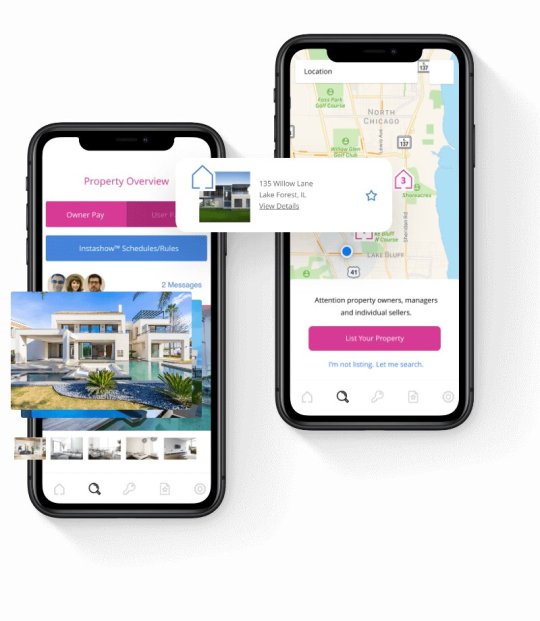
IoT App Development Company: Everything You Need To Know
Get a balance between quality, cost, and time with superior IoT Services for dealing with your business challenges in the best possible manner. We serve global clients with boastful services on a varied scale, with end-to-end network vs. device integration services with the most innovative solutions. Optimize your IoT strategy with meticulous IoT device selection tailored to your goals.
Benefits of IoT Development
The Internet of Things (IoT) is the technology that allows businesses to integrate their service via secondary devices. With IoT, you can build user-friendly apps compatible with various devices, operating systems, and screen resolutions. You can also integrate your smart apps with third-party apps using secure APIs and collect vital user data and behavior on the mobile application to personalize the experience even further.
How to choose a reliable partner for IoT Development?
While analyzing an IoT vendor partner, you should prioritize secure organizations that behold strong web security and development. You must also adopt Full-stack organizations and companies that can establish an ‘all-in-one’ solution that manages a single project’s hardware, mobile interface, and web interface. Opting for a vendor offering these development capabilities and improvements is a much safer bet.
Why TechAhead for IoT App Development?
With over 13+ years of experience delivering cutting-edge digital transformation and mobility solutions, TechAhead has been a major digital partner for globally established companies like Disney, Audi, and American Express. Clutch has ranked us among the top IT IoT development services companies and the top multicultural companies with a strong-willed presence across Los Angeles and Noida.
Who is the top IoT development company?
TechAhead, of course! We have been accelerating business agility and stimulating digital transformation since 2009. Our company was recognized last year as the top IT service provider by Leaders Matrix, an industry-recognized, unbiased ranking entity.
We disrupt the traditional outsourcing model of other IoT companies. We ensure long-term and sustainable success for our customers and the mobile and digital ecosystem. Our relationships with our customers go beyond transactional. Our software development services give entrepreneurial ideas life. We infuse existing mobile and digital platforms with innovation and creativity.
What are the top IoT Apps developed by TechAhead?
We are a world-class digital transformation and mobility solution company and have delivered over 2,000+ project developments on Android, iOS, and cross-platform compatible apps for global brands. We recently announced the launch of “The Healthy Mummy” fitness app, which was recently ranked the world’s #1 Mum’s fitness app, attracting over 2M+ users and adding to many of our success stories.
What about Data security and integrity of IoT Apps?
All TechaAhead development practices are highly efficient and secure thanks to meticulous adherence to security practices and data governance at every step. Our development process considers the devices connected, cloud computing requirements, IoT platforms, and security while developing IoT mobile applications. We ensure that our IoT apps follow all the guidelines and protocols for the highest security.
How to get IoT app maintenance help and post-launch support?
Our role remains strong after the go-live. TechAhead takes full responsibility for the smooth functioning of IoT solutions in your company. With platform support services, maintenance, and the support of process management, our team will monitor your app’s success, it’s adaptability and remove any bugs/errors as per our client’s business needs and user reviews.
In conclusion, the world of IoT app development is a realm of boundless possibilities. Through TechAhead's expertise and commitment, businesses can harness the power of IoT to create user-friendly apps, ensure data security, and drive innovation. TechAhead's track record of success, recognition, and dedication to post-launch support make it a reliable partner in the journey of IoT app development. With a focus on disruptive innovation and holistic relationships, TechAhead is poised to continue shaping the landscape of IoT solutions, delivering transformative results for businesses worldwide!
#IoT software development services#embedded software development services#IoT device selection#IoT strategy consultation#IoT data visualization tools#edge computing for IoT#IoT network protocols (e.g.#MQTT#CoAP)#IoT user experience design#AI in IoT solutions#IoT and blockchain integration#IoT app design services#IoT app development#IoT device integration#IoT data analytics services#IoT security solutions#custom IoT application development#enterprise IoT services#industrial IoT solutions#IoT firmware development#IoT cloud integration#IoT connectivity solutions#mobile app development#software development#TechAhead Corp#TechAheadCorp#techaheadcorp.com
0 notes
Text
Dell Boomi API Integration

Title: The Power of Dell Boomi API Integration: Streamlining Your Digital Ecosystem
Introduction
In today’s interconnected world, APIs (Application Programming Interfaces) are the invisible glue that binds different applications and systems together. They allow seamless communication and data exchange, forming the backbone of modern digital enterprises. Dell Boomi, a leading iPaaS (Integration Platform as a Service) provider, offers robust API integration capabilities, empowering businesses to unlock the full potential of their data and applications.
What is API Integration?
API integration connects two or more applications or systems through their respective APIs. This enables them to share data, trigger actions, and automate processes, improving efficiency, collaboration, and innovative digital experiences.
Why Dell Boomi for API Integration?
Dell Boomi stands out as a powerful choice for API integration due to its:
Low-code/No-code Environment: Boomi’s visual drag-and-drop interface simplifies the creation of complex API integrations, making it accessible to developers and non-technical users.
Extensive Connector Library: Boomi provides a vast array of pre-built connectors for popular cloud applications, databases, enterprise systems (like SAP and NetSuite), and standard protocols, making it easy to connect virtually any system or data source.
API Management Capabilities: Boomi’s API Management features allow you to create, publish, secure, monitor, and monetize your APIs, providing complete control over your API ecosystem.
Scalability and Reliability: Boomi’s cloud-based architecture ensures scalability and high availability of your integrations, enabling your business to handle increased demand seamlessly.
Key Benefits of Dell Boomi API Integration
Enhanced Data Flow: Break down data silos and enable real-time data exchange between disparate systems, improving decision-making and eliminating costly data entry errors.
Business Process Automation: Orchestrate complex workflows across multiple applications, reducing manual intervention and streamlining operations.
Improved Customer Experience: Build personalized digital experiences by integrating customer data with various marketing and sales platforms.
Faster Innovation: Quickly develop new products, services, and business models by leveraging existing data and capabilities through APIs.
Use Cases
Here are common scenarios where Dell Boomi API integration shines:
Customer 360-degree View: Integrate CRM, e-commerce, and support systems to view your customers comprehensively.
Order Management Automation: Synchronize orders across e-commerce systems, inventory, and shipping providers for smooth fulfillment.
Partner Onboarding: Streamline the onboarding process for new partners by integrating your partner portal with internal systems.
IoT Data Integration: Collect and analyze data from IoT devices to improve operational efficiency and gain real-time insights.
Getting Started with Dell Boomi API Integration
Identify Integration Needs: Assess your systems and processes to determine where API integration can add value.
Familiarize Yourself with Boomi: Explore Boomi’s platform and resources to understand its capabilities and best practices.
Plan Your API Integration: Design the integrations, considering data mapping, error handling, and security.
Build and test: Use Boomi’s tools to create and thoroughly test your API integrations.
Deploy and Monitor: Deploy integrations to production and monitor their performance.
Conclusion
Dell Boomi API integration empowers businesses to become more agile and responsive to changing market demands. Dell Boomi is a potent tool to consider in your technology stack if you’re looking to optimize your digital ecosystem and unlock new growth opportunities.
youtube
You can find more information about Dell Boomi in this Dell Boomi Link
Conclusion:
Unogeeks is the No.1 IT Training Institute for Dell Boomi Training. Anyone Disagree? Please drop in a comment
You can check out our other latest blogs on Dell Boomi here – Dell Boomi Blogs
You can check out our Best In Class Dell Boomi Details here – Dell Boomi Training
Follow & Connect with us:
———————————-
For Training inquiries:
Call/Whatsapp: +91 73960 33555
Mail us at: [email protected]
Our Website ➜ https://unogeeks.com
Follow us:
Instagram: https://www.instagram.com/unogeeks
Facebook: https://www.facebook.com/UnogeeksSoftwareTrainingInstitute
Twitter: https://twitter.com/unogeek
0 notes
Text
The Future of Social Media Marketing Agency in Gurgaon
In the dynamic landscape of digital marketing, Social Media Marketing (SMM) stands as a pillar of connectivity, engagement, and brand promotion. As businesses navigate through the ever-evolving realm of social media, understanding the future trends and technologies shaping SMM becomes paramount. Plassey Technologies, a pioneering Social Media Marketing Agency in Gurgaon, recognizes the significance of staying ahead in this competitive arena.
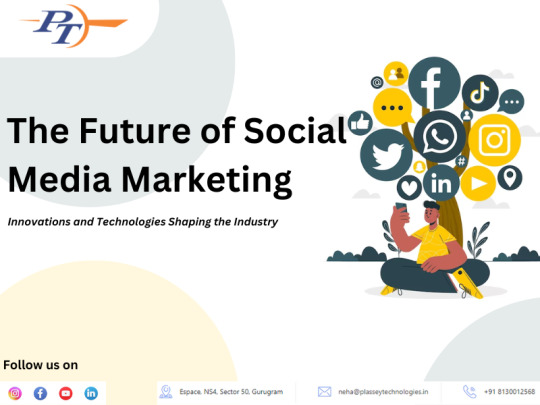
Current Trends in Social Media Marketing
Influencer Marketing: With the rise of social media influencers, brands are leveraging their reach and credibility to connect with target audiences authentically.
Video Content Dominance: Visual storytelling continues to reign supreme, with videos captivating audiences and driving higher engagement rates across social media platforms.
Rise of Ephemeral Content: Platforms like Instagram and Snapchat have popularized ephemeral content, fostering a sense of urgency and exclusivity among users.
Personalized User Experiences: Tailoring content based on user preferences and behaviors enhances engagement and fosters stronger relationships between brands and consumers.
Innovations Driving the Future of SMM
Artificial Intelligence and Machine Learning in SMM: AI-powered tools enable predictive analytics, content optimization, and personalized messaging, enhancing campaign effectiveness.
Augmented Reality (AR) and Virtual Reality (VR) Integration: Immersive experiences allow brands to showcase products in interactive ways, enhancing engagement and driving conversions.
Voice Search Optimization: As voice search continues to gain prominence, optimizing content for voice queries becomes imperative for SMM success.
Blockchain for Transparency and Security in Advertising: Blockchain technology ensures transparency in ad transactions, mitigating issues such as ad fraud and enhancing trust between advertisers and consumers.
Technologies Shaping the Future Landscape
5G Technology and Its Impact on SMM: The advent of 5G promises faster connectivity and seamless multimedia experiences, revolutionizing content consumption and delivery on social media platforms.
Internet of Things (IoT) and Social Media Integration: IoT devices generate vast amounts of data, which can be leveraged to create personalized social media experiences and targeted advertising campaigns.
Chatbots and Conversational AI for Customer Engagement: Chatbots powered by AI enable real-time customer support, lead generation, and personalized interactions, enhancing brand-consumer relationships.
Data Analytics and Predictive Modeling for Enhanced Campaign Effectiveness: Harnessing big data analytics enables marketers to make data-driven decisions, optimize campaigns in real-time, and predict future trends.
Case Study: Plassey Technologies' Approach to Future-Proof SMM
At Plassey Technologies, we are committed to delivering innovative and future-proof SMM solutions to our clients. By leveraging cutting-edge technologies such as AI, AR, and blockchain, we craft personalized strategies that drive engagement, conversions, and brand loyalty. Our success stories and client testimonials speak volumes about our expertise in navigating the evolving landscape of social media marketing.
Challenges and Opportunities Ahead
Privacy Concerns and Regulatory Compliance: With growing concerns around data privacy, marketers must prioritize compliance with regulations such as GDPR and CCPA to maintain consumer trust.
Keeping Pace with Rapid Technological Advancements: The rapid pace of technological innovation requires marketers to stay abreast of emerging trends and adapt their strategies accordingly.
Embracing Creativity and Authenticity: In an era of content saturation, brands must focus on creating authentic and compelling content that resonates with their target audience.
Collaboration and Partnerships for Holistic Solutions: Collaboration between brands, agencies, and technology providers fosters innovation and enables the development of holistic SMM solutions that deliver measurable results.
Conclusion
As we look ahead to the future of social media marketing, one thing is certain: innovation will continue to drive the industry forward. By embracing emerging technologies, staying attuned to consumer preferences, and fostering creativity and authenticity, brands can unlock new opportunities for growth and engagement in the digital age. Plassey Technologies remains committed to guiding businesses on this transformative journey, helping them navigate the complexities of SMM with confidence and success.
#Social Media Marketing Company Gurgaon#Social Media Marketing Services Gurgaon#Social Media Agency Gurgaon#Social Media Marketing Agency in Gurgaon
0 notes
Text
Exploring Data Science: Unveiling its Potential and Future Directions
In today's digital landscape, data permeates every aspect of our lives, serving as a treasure trove of insights waiting to be discovered. However, making sense of this vast expanse of information requires the expertise of data science. But what exactly does data science entail, and what lies ahead for this evolving field? Let's embark on a journey to demystify the realm of data science and explore its promising future. If you want to advance your career at the Data Science Training in Pune, you need to take a systematic approach and join up for a course that best suits your interests and will greatly expand your learning path.
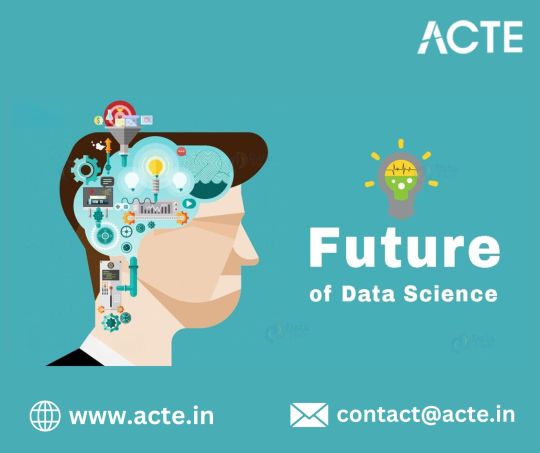
Defining Data Science
Imagine navigating through a dense forest in search of a hidden treasure, with each tree representing a piece of data. Data science is akin to wielding a powerful compass that helps you not only locate the treasure but also understand its significance. Essentially, data science involves the art of extracting valuable insights from raw data through a blend of mathematical, statistical, and computational techniques. By employing tools such as machine learning algorithms, data visualization, and big data technologies, data scientists transform complex data sets into actionable intelligence. For those looking to excel in Data Science, Data Science Online Training is highly suggested. Look for classes that align with your preferred programming language and learning approach.
The Future Landscape of Data Science
As we peer into the horizon of data science, several trends emerge, shaping its trajectory and potential impact:
Advancements in AI and Machine Learning: Artificial intelligence and machine learning continue to drive innovation within the field of data science. From predictive analytics to natural language processing, these technologies are unlocking new frontiers in areas such as healthcare, finance, and autonomous systems.
Ethical Considerations and Privacy Protection: With the increasing prevalence of data-driven decision-making, ensuring ethical use and safeguarding data privacy are becoming paramount concerns. In the future, data science will need to navigate complex ethical dilemmas and adhere to stringent regulatory frameworks to earn the trust of stakeholders.
Democratization of Data: Empowering non-technical users to harness the power of data is a trend that will gain momentum in the future. User-friendly tools and platforms will democratize access to data analysis, fostering a culture of data-driven decision-making across organizations.
Edge Computing and IoT Integration: The proliferation of Internet of Things (IoT) devices is generating vast streams of data at the edge of networks. Data science will play a crucial role in processing and analyzing this data in real-time, enabling applications such as smart cities, connected healthcare, and autonomous vehicles.
Interdisciplinary Collaboration: Data science thrives on collaboration between diverse fields and expertise. In the future, we can expect greater interdisciplinary collaboration between data scientists, domain experts, and stakeholders, leading to innovative solutions to complex problems.

In essence, data science represents a journey of discovery and innovation, where data serves as the fuel for transformation. By embracing the potential of data science, organizations can unlock new opportunities, drive efficiency, and create positive societal impact. As we navigate the evolving landscape of data science, one thing remains clear—the future is brimming with possibilities, waiting to be explored and harnessed for the greater good. So, let's embark on this journey together and unlock the boundless potential of data science!
#data science#data science course#data science training#data science certification#data scientist#data science online course
0 notes
Text
Boomi Unified Platform
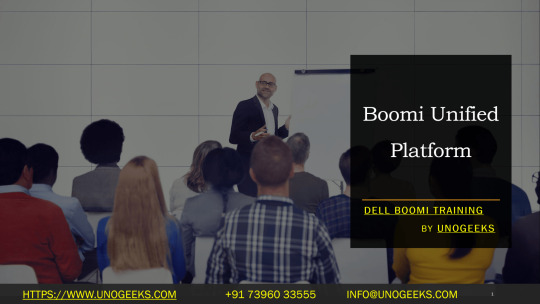
The Boomi Unified Platform: Your Key to Seamless Integration
In today’s world of ever-expanding applications, cloud services, and the explosion of data, businesses need a way to make everything talk to each other. This is where integration platforms come in, and Boomi is a leader in the field. The Boomi Unified Platform offers robust tools to streamline your business processes, enhance efficiency, and make informed, data-driven decisions.
What is the Boomi Unified Platform?
At its core, Boomi is a cloud-based integration platform as a service (iPaaS). Let’s break down what that means:
Cloud-based: Boomi lives in the cloud, meaning no complex on-premise installations. It’s scalable, easily accessible, and always up-to-date.
Integration: Boomi focuses on connecting different systems, applications (apps), and data sources. Whether you need to link your CRM with your accounting software or pull data from IoT devices, Boomi makes it happen.
Platform: Boomi provides more than just connectors—it’s a complete toolkit for building and managing integrations, data transformation, and business process automation.
As a service: Pay for what you use with a subscription model; this offers flexibility and cost control.
Why Do You Need the Boomi Unified Platform?
The old ways of managing integrations are just not built for the modern business landscape. Boomi solves several key pain points:
Siloed data: Your customer data might be scattered across spreadsheets, email marketing tools, sales databases, etc. Boomi brings it all together.
Manual Processes: Repetitive tasks and moving data between systems by hand are time-consuming and error-prone. Boomi automates them.
Poor visibility: If you don’t have a centralized view of integrations, troubleshooting problems or changing systems becomes a headache. Boomi provides dashboards and monitoring.
Limited IT resources: Boomi’s low-code visual interface lets even non-developers build robust integrations, making it a great tool to help your IT team focus on more complex tasks.
Key Features of the Boomi Unified Platform
Pre-built Connectors: Boomi boasts a vast library of connectors to common apps, databases, cloud services, and more. This minimizes the need for custom coding.
Drag-and-Drop Interface: Building integrations often feels like visual programming, which makes it easy to learn and understand.
Data Mapping and Transformation: Ensure data flows smoothly even when systems use different formats.
Master Data Hub: Establish a golden record of essential data (like customer profiles) to enhance data quality and decision-making.
API Management: Create and manage APIs to expose your data and services securely.
Boomi Flow: Automate workflows spanning multiple systems based on real-time business events.
The Bottom Line
In the age of digital transformation, integration is no longer optional. The Boomi Unified Platform gives you the agility and adaptability to stay ahead of the curve. If you value efficiency and data-driven decision-making and want to reduce the burden on your IT staff, Boomi is worth a close look.
youtube
You can find more information about Dell Boomi in this Dell Boomi Link
Conclusion:
Unogeeks is the No.1 IT Training Institute for Dell Boomi Training. Anyone Disagree? Please drop in a comment
You can check out our other latest blogs on Dell Boomi here – Dell Boomi Blogs
You can check out our Best In Class Dell Boomi Details here – Dell Boomi Training
Follow & Connect with us:
———————————-
For Training inquiries:
Call/Whatsapp: +91 73960 33555
Mail us at: [email protected]
Our Website ➜ https://unogeeks.com
Follow us:
Instagram: https://www.instagram.com/unogeeks
Facebook: https://www.facebook.com/UnogeeksSoftwareTrainingInstitute
Twitter: https://twitter.com/unogeek
0 notes
Text
https://www.bctdigital.ai/rt360-credit-risk-suite/rt360-real-time-monitoring-system/

Elevating Operational Efficiency: BCT Digital's Real-Time Monitoring System
In the dynamic landscape of modern businesses, the need for real-time insights and proactive decision-making has become paramount. In this era of digital transformation, enterprises across industries are seeking innovative solutions to streamline operations, enhance productivity, and ensure seamless performance. BCT Digital emerges as a pioneering force, empowering organizations with its cutting-edge Real-Time Monitoring System, revolutionizing the way businesses monitor and manage their operations.
BCT Digital's Real-Time Monitoring System is a comprehensive solution designed to provide instant visibility into critical processes, assets, and workflows. By leveraging advanced technologies such as IoT (Internet of Things), AI (Artificial Intelligence), and big data analytics, this system delivers actionable insights in real-time, enabling businesses to identify issues, optimize performance, and drive continuous improvement.
At the heart of BCT Digital's solution is its robust and scalable architecture, engineered to cater to the diverse needs of enterprises across various sectors. Whether it's monitoring manufacturing processes on the factory floor, tracking supply chain operations, or overseeing IT infrastructure, BCT Digital's platform offers unparalleled versatility and adaptability.
One of the key differentiators of BCT Digital's Real-Time Monitoring System is its ability to collect, process, and analyze data in real-time. Through a network of sensors, devices, and connected assets, the system captures a wealth of information from across the enterprise ecosystem. This data is then aggregated, contextualized, and presented through intuitive dashboards and visualization tools, empowering users to gain deep insights into their operations instantaneously.
Moreover, BCT Digital places a strong emphasis on customization and integration, recognizing that every business has unique requirements and existing infrastructure. Whether it's integrating with legacy systems, configuring alerts and notifications, or developing bespoke analytics modules, BCT Digital works closely with its clients to tailor the solution to their specific needs, ensuring maximum impact and ROI.
In addition to its real-time monitoring capabilities, BCT Digital's system also offers predictive analytics functionality, leveraging machine learning algorithms to forecast trends, anticipate potential issues, and prescribe proactive measures. By harnessing the power of predictive insights, businesses can mitigate risks, optimize resource allocation, and stay ahead of the curve in today's fast-paced business environment.
Furthermore, BCT Digital places a strong emphasis on data security and compliance, employing industry-leading encryption protocols and access controls to safeguard sensitive information. With data privacy and regulatory requirements becoming increasingly stringent, BCT Digital ensures that its solution adheres to the highest standards of security and compliance, providing peace of mind to its clients.
BCT Digital's Real-Time Monitoring System represents a paradigm shift in how businesses monitor and manage their operations. By offering instant visibility, actionable insights, and predictive analytics capabilities, BCT Digital empowers organizations to drive operational excellence, enhance efficiency, and achieve sustainable growth in the digital age. With its commitment to innovation, customization, and security, BCT Digital is poised to redefine the future of real-time monitoring solutions and revolutionize the way businesses operate.
0 notes
Text
Transforming Business Insights: Leading Data Analysis Companies in Bangalore.

Introduction
Bangalore, often dubbed the Silicon Valley of India, stands as a dynamic hub for technology companies and startups. Amidst this thriving IT ecosystem, data analysis firms are pivotal in converting raw data into strategic business insights across diverse industries. In this article, we explore the forefront of Data Analysis Companies in Bangalore by showcasing leading companies that drive innovation and reshape business strategies through data-driven decision-making.
Importance of Data Analysis in Bangalore
Bangalore, recognized as a hub for data science and analytics, owes its prominence to a convergence of factors: a deep pool of skilled professionals, robust IT infrastructure, and a supportive startup ecosystem. Today, data analysis is indispensable for businesses seeking a competitive edge, operational efficiency, enhanced customer experience, and sustained growth. Consequently, Bangalore has seen the emergence of numerous data analysis companies offering specialized services spanning predictive analytics and business intelligence solutions.
Key Players in Bangalore's Data Analysis Industry
1. Pioneering Advanced Analytics
At the forefront of advanced analytics solutions in Bangalore, our company boasts a team of seasoned data scientists and domain experts specializing in predictive modeling, machine learning algorithms, and AI-driven analytics. We have successfully implemented data-driven strategies for leading enterprises in diverse sectors such as e-commerce, healthcare, finance, and manufacturing, enabling our clients to optimize processes and unlock new revenue streams.
2. Innovating with Big Data
In the bustling landscape of Bangalore's data analysis industry, one company stands out for its expertise in big data analytics. Specializing in leveraging cutting-edge technologies like Hadoop and Spark, The company has carved a niche for itself, empowering businesses to harness the potential of large datasets for strategic decision-making and better business outcomes across diverse industry verticals, including retail, telecommunications, and logistics.
3. Driving Business Intelligence Excellence
Amidst Bangalore's dynamic technology landscape, one company has earned a distinguished reputation for its exceptional expertise in business intelligence and data visualization services. By integrating disparate data sources and deploying intuitive dashboards, they empower clients with real-time analytics and interactive reporting tools. This capability enables stakeholders to make informed decisions swiftly, resulting in enhanced operational efficiency and improved performance across departments.
4. Specializing in Healthcare Analytics
Amidst Bangalore's dynamic technology ecosystem, one company has emerged as a trailblazer in healthcare analytics, specializing in tailored solutions for the medical sector. Leveraging advanced analytics platforms that harness electronic health records (EHRs), medical imaging data, and patient demographics, this company's innovative approach assists healthcare providers in optimizing treatments, reducing costs, and ultimately enhancing patient outcomes. The impact of their work extends far beyond Bangalore, with clients spanning across India and globally.
Industry Trends and Challenges
The data analysis industry in Bangalore is dynamic, characterized by continuous innovation and evolving technologies. Several trends are shaping its trajectory:
AI and Machine Learning: Artificial Intelligence (AI) and Machine Learning (ML) are transformative technologies that have revolutionized various industries, including data analysis, healthcare, finance, retail, and more.
IoT Integration: Internet of Things (IoT) integration is a critical aspect of modern technology ecosystems, especially in cities like Bangalore known for its innovative and tech-driven environment.
Data Privacy and Security: Data privacy and security are critical aspects of information management, especially in today's digital age where data breaches and privacy violations are increasingly prevalent.
Demand for Data Talent: The demand for data talent, including data scientists, data analysts, and data engineers, continues to grow rapidly in Bangalore and globally. This demand is driven by the increasing volume and complexity of data generated by organizations across various industries.
Conclusion
The landscape of Data Analysis Companies in Bangalore is a testament to the city's global standing as a technology hub. These companies play a crucial role in driving digital transformation and empowering businesses to harness data as a strategic asset. In Bangalore's dynamic environment of innovation and entrepreneurship, data analysis firms are poised to shape the future of the industry and contribute significantly to economic growth in the region. Key areas of expertise among these companies include advanced analytics, big data processing, business intelligence, and specialized domains such as healthcare analytics. Their capabilities exemplify the transformative impact of data-driven insights, enabling businesses to make informed decisions, optimize operations, and unlock new opportunities.
0 notes